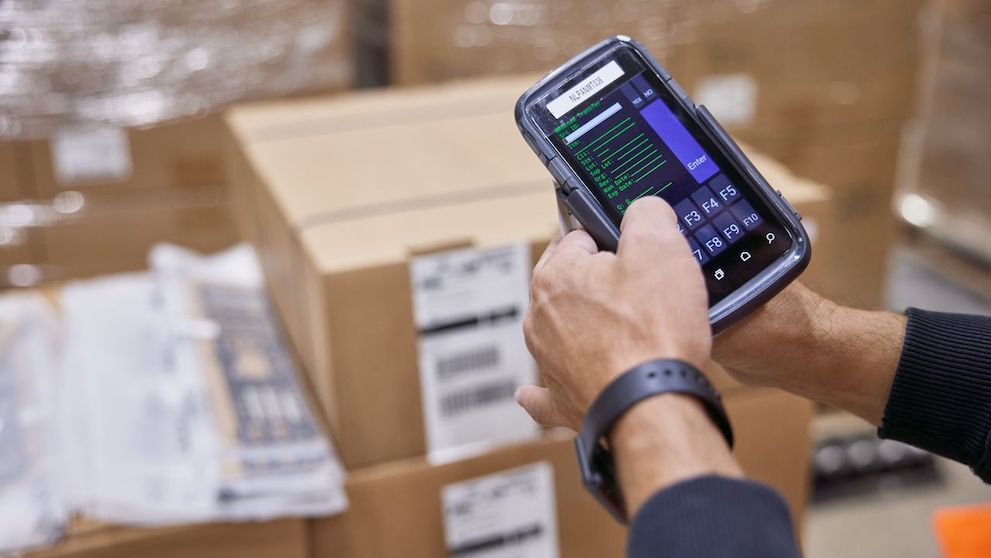Just as e-commerce trends change over time, so do customers’ expectations. Meeting them should be a priority of any online business looking to build customer loyalty. So, what exactly do online shoppers expect in 2023 and what are the best strategies to manage customer expectations?
Customer expectations in 2023
In a DHL survey, only 38% of B2B business owners and 31% of B2C owners said they had been able to fully implement their e-commerce strategy. The main reason? Having to manage customer expectations that are changing considerably.
But what are these expectations that have rocketed so rapidly? The 900 respondents – all decision-makers and in key industries – had very clear ideas.
Customer service tops the list of expectations
The graph shows key customer-facing considerations for businesses in B2C and B2B sectors. Over 50% of survey respondents in each sector said customer service was extremely important.
Customers now expect their purchases to be painless – a seamless experience with excellent service. Assuming you offer the same goods for the same price as many competitors, meeting customers’ demands could be the reason they choose your business. Demands that not too long ago may have been inconceivable – next-day or even same-day delivery, real-time tracking, flexible ordering, and simple returns.
Delivery rates highly for B2B and B2C customers
44% of both B2B and B2C respondents said time-specific delivery was a key customer expectation – whether within two hours, same day or next day.
Offering multiple delivery options is also very important, though slightly more so for B2C businesses (41%) than B2B businesses (36%). Around 30% in each sector said it was also very important that shipping was free of charge.
Over one third say returns are important
Offering multiple return channels to customers – for example, to a service point, a locker, or back to a bricks-and-mortar store – was rated as important by over one third of respondents in both B2C (37%) and B2B (39%) sectors. A hassle-free returns process was also key to meeting customer expectations, for 37% and 34% respectively.
Product availability and support an important factor
In addition to customer service and time-specific delivery, product availability was reported as one of the most important customer expectations. Over 40% of B2C respondents said it was very important and just under 40% of B2B respondents. Understandably, technical product support was more important in the B2B sector, with 45% rating it highly compared with 36% in B2C.
Types of customer expectations
Customers expect many things of an e-commerce business, but most can be broken down into the following categories.
Explicit expectations
Explicit expectations are specific targets customers have when they seek out a product or service – for example, quality, price and/or performance. They are “must haves.”
Implicit expectations
Implicit expectations are those that customers rarely voice but assume will be met – for example, in e-commerce, implicit expectations might be that the product arrives undamaged, complete, and matches the description on the website. Implicit customer expectations are often the base standard you expect.
Technological expectations
Technological expectations are influenced by how a product category evolves. For example, mobile phones are constantly updated with new features and innovations, so customers’ technological expectations of this category grow too.
Static performance expectations
These relate to the overall performance and quality of your brand. Accessibility, customization, reliability, punctuality and user experience are just some of the elements influencing customers’ perception of it.
Dynamic performance expectations
These relate to how a product or service is expected to change over time. To exceed dynamic expectations, such as changes in customers’ needs or their business goals, you’ll need to monitor these as they evolve and adapt accordingly.
Digital expectations
These are what customers expect when interacting with your brand online – and they have changed following the pandemic. Customers now expect a mobile-optimized website, product transparency, a personalized user experience, and the ability to purchase on social channels, among other things.
Interpersonal expectations
Interpersonal expectations are what customers expect during person-to-person interactions – for example, with customer services. They expect customer service assistants to be expert, friendly, and courteous. While interpersonal expectations are independent of the product purchased, they are important in building customer loyalty.
Situational expectations
These are influenced by a customer’s experience pre- and post-purchase. Customers may form situational expectations based on imagery they’ve seen or an experience they’ve had. They are the least predictable expectations and the hardest to manage, and can also evolve over time.
How to manage customer expectations: six strategies
Managing customer expectations isn’t easy. Here are top six strategies to help you.
1. Prioritize service
Great customer service can differentiate you from your competitors, even if your products are almost identical, and gives you a real advantage. In the past, companies would cut back on service when they reached a certain size, in order to reduce costs. But now, especially in e-commerce, competition is so high that if you don’t deliver on service, customers will simply go elsewhere.
2. Be where your customers are
With people increasingly shopping on smartphones rather than laptops and desktops, and social media platforms becoming accepted places to buy, you need to ensure your business is in tune with these new customer behaviors. They will expect your site to be mobile-optimized, and expect you to have a presence and interact on social channels, so make sure you don’t disappoint. Work out where your customers are engaging most and be there – and be aware that this can change, too.
3. Listen to customer feedback
According to HubSpot’s Annual State of Service in 2022 report, 42% of businesses do not survey their customers1.
Yet, with so many survey solutions available – plus chatbots, social media, email, and customer reviews – there are now a multitude of ways to get feedback from your customers. It’s the best strategy to both understand and manage their expectations, as well as identify any pain points before they escalate.
4. Be honest with them
By being open and honest with your customers, you can earn their trust and loyalty to your brand.
For a start, set realistic expectations. For example, don’t promise next-day delivery unless you can fulfil that expectation. And if issues develop that mean you may not meet your usual high service standards, let your customers know and keep them updated on the situation. Being honest will help keep them on your side.
5. Keep communicating
The after-sales service you offer is extremely important. A simple thank-you to a customer, or a discount for their next purchase goes a long way, especially if personalized. Newsletters with relevant offers are another great way to maintain communication – but don’t send too many.
6. Make your logistics a priority
Delivery and returns have become key areas of concern for e-commerce customers. To keep up with their increasing demands, consider partnering with a third-party logistics provider (3PL).
You’ll benefit from their supply chain expertise and flexible distribution network, which means you’ll have a simpler, faster and more cost-effective way of getting your products to customers. This will leave you with more time to focus on other aspects of your e-commerce business.
Discover more about outsourcing your logistics, here.
The future: customer expectations will only increase
Like e-commerce itself, customer expectations will continue to grow in the years ahead. As a result, customer service will become a major battleground for e-commerce businesses in both the B2C and B2B sectors. Only those which prioritize and invest in this area will succeed in meeting customer expectations and building loyalty.
Partner with the experts: open a DHL Express Business Account to ensure your customers’ expectations are met – every time.
1 Hubspot


















































